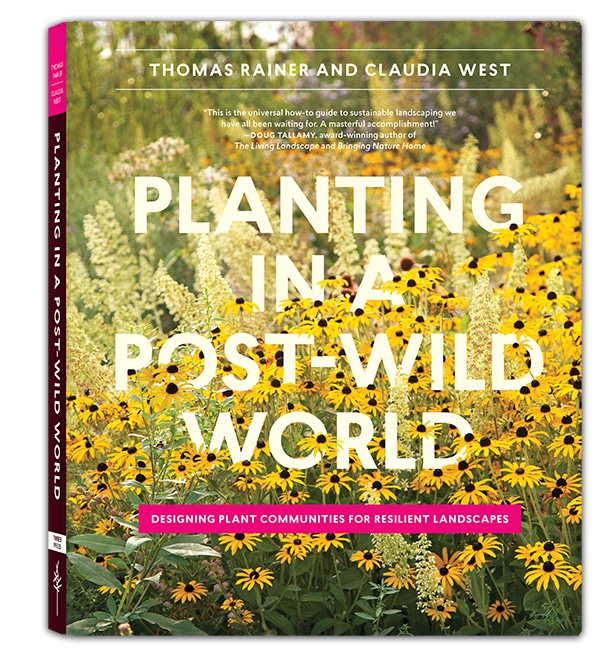BOOK REVIEW: PLANTING IN A POST-WILD WORLD
Though most of their readers might be other designers, Thomas Rainer and Claudia West’s Planting in a Post-Wild World offers plenty of information for non-professionals as well. The book shows how to design and maintain an ecological landscape and does so in a beautifully, clear way. One of the most helpful sections of the book suggests viewing a landscape in four different layers:
- Structural Layer: comprised of the year-round key parts of a design. These components should always be maintained, though replaced if needed, and kept clearly defined as they are the basis of the design.
- Seasonal Layer: waves of color/texture provided by each season’s visually dominant plants. These are maintained by treating them en masse, thinning or spreading as necessary.
- Groundcover Layer: provides the main diversity of the planting and most of the ecological function. This layer does not contribute noticeably to the aesthetic design, except as a living mulch. It’s managed by retaining and adding diversity as much as possible to maximize the health of all the plants in the landscape.
- Gap Fillers: self-sowing plants throughout the design and encouraged to set seed. This builds up a seed bank of desirable plants which will ideally sprout to fill any gaps that occur.

For a gardener, unfamiliar with ecology, this book is a great primer.






Leave a Reply